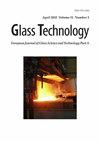网络安全中的机器学习:技术与挑战
IF 0.3
4区 材料科学
Q4 MATERIALS SCIENCE, CERAMICS
Glass Technology-European Journal of Glass Science and Technology Part a
Pub Date : 2023-06-02
DOI:10.47672/ejt.1486
引用次数: 6
摘要
在计算机世界中,数据科学是网络安全操作和技术最近发生巨大变化背后的力量。使安全系统自动化和智能化的秘诀是从网络安全数据中提取与安全事件相关的模式或见解,并构建适当的数据驱动模型。数据科学,也被称为各种科学方法、机器学习技术、过程和系统,是通过使用数据来研究实际事件的科学。由于其独特的特性,如灵活性、可扩展性和快速适应新的和不可知障碍的能力,机器学习技术已被用于许多科学领域。由于社交网络、云和web技术、网上银行、移动环境、智能电网等方面的显著进步,网络安全是一个迅速发展的领域,需要得到大量关注。各种机器学习技术已经有效地解决了如此广泛的计算机安全问题。本文涵盖了几个机器学习在网络安全中的应用。网络钓鱼检测、网络入侵检测、击键动力学认证、密码学、人类交互证明、社交网络中的垃圾邮件检测、智能电表能耗分析以及机器学习技术本身的安全问题都涵盖在本研究中。该方法包括收集大量网络钓鱼和合法实例的数据集,提取电子邮件标题、内容和url等相关特征,并使用监督学习算法训练机器学习模型。机器学习模型可以有效识别网络钓鱼邮件和网站,准确率高,误报率低。为了增强网络钓鱼检测,建议不断更新训练数据集以包含新的网络钓鱼技术,并采用结合多个机器学习模型的集成方法以获得更好的性能。本文章由计算机程序翻译,如有差异,请以英文原文为准。
Machine Learning in Cybersecurity: Techniques and Challenges
In the computer world, data science is the force behind the recent dramatic changes in cybersecurity's operations and technologies. The secret to making a security system automated and intelligent is to extract patterns or insights related to security incidents from cybersecurity data and construct appropriate data-driven models. Data science, also known as diverse scientific approaches, machine learning techniques, processes, and systems, is the study of actual occurrences via the use of data. Due to its distinctive qualities, such as flexibility, scalability, and the capability to quickly adapt to new and unknowable obstacles, machine learning techniques have been used in many scientific fields. Due to notable advancements in social networks, cloud and web technologies, online banking, mobile environments, smart grids, etc., cyber security is a rapidly expanding sector that requires a lot of attention. Such a broad range of computer security issues have been effectively addressed by various machine learning techniques. This article covers several machine-learning applications in cyber security. Phishing detection, network intrusion detection, keystroke dynamics authentication, cryptography, human interaction proofs, spam detection in social networks, smart meter energy consumption profiling, and security concerns with machine learning techniques themselves are all covered in this study. The methodology involves collecting a large dataset of phishing and legitimate instances, extracting relevant features such as email headers, content, and URLs, and training a machine-learning model using supervised learning algorithms. Machine learning models can effectively identify phishing emails and websites with high accuracy and low false positive rates. To enhance phishing detection, it is recommended to continuously update the training dataset to include new phishing techniques and to employ ensemble methods that combine multiple machine learning models for better performance.
求助全文
通过发布文献求助,成功后即可免费获取论文全文。
去求助
来源期刊
CiteScore
0.30
自引率
0.00%
发文量
0
审稿时长
>12 weeks
期刊介绍:
The Journal of the Society of Glass Technology was published between 1917 and 1959. There were four or six issues per year depending on economic circumstances of the Society and the country. Each issue contains Proceedings, Transactions, Abstracts, News and Reviews, and Advertisements, all thesesections were numbered separately. The bound volumes collected these pages into separate sections, dropping the adverts. There is a list of Council members and Officers of the Society and earlier volumes also had lists of personal and company members.
JSGT was divided into Part A Glass Technology and Part B Physics and Chemistry of Glasses in 1960.

 求助内容:
求助内容: 应助结果提醒方式:
应助结果提醒方式:


